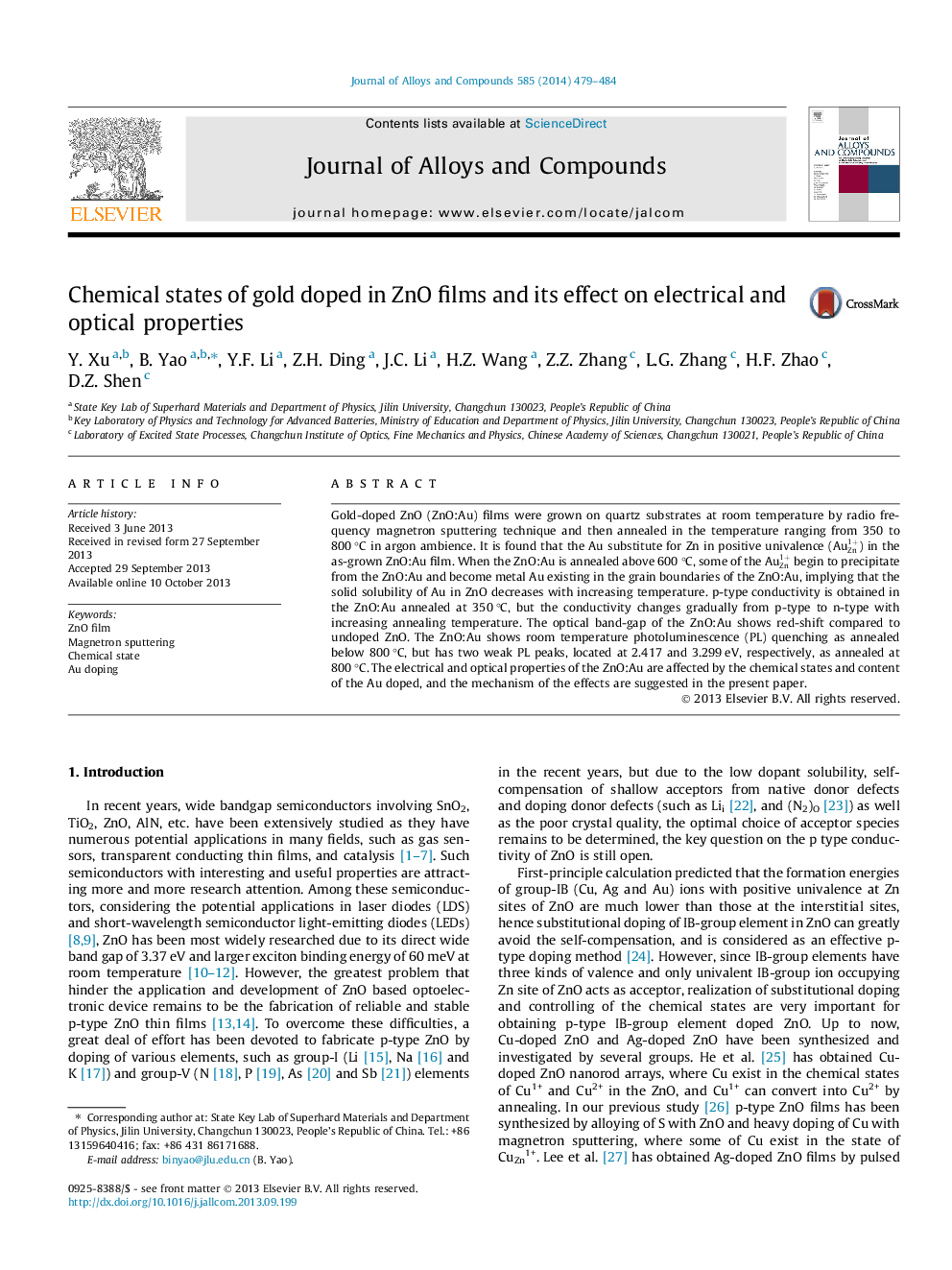| Article ID | Journal | Published Year | Pages | File Type |
|---|---|---|---|---|
| 1613007 | Journal of Alloys and Compounds | 2014 | 6 Pages |
Abstract
Gold-doped ZnO (ZnO:Au) films were grown on quartz substrates at room temperature by radio frequency magnetron sputtering technique and then annealed in the temperature ranging from 350 to 800 °C in argon ambience. It is found that the Au substitute for Zn in positive univalence (AuZn1+) in the as-grown ZnO:Au film. When the ZnO:Au is annealed above 600 °C, some of the AuZn1+ begin to precipitate from the ZnO:Au and become metal Au existing in the grain boundaries of the ZnO:Au, implying that the solid solubility of Au in ZnO decreases with increasing temperature. p-type conductivity is obtained in the ZnO:Au annealed at 350 °C, but the conductivity changes gradually from p-type to n-type with increasing annealing temperature. The optical band-gap of the ZnO:Au shows red-shift compared to undoped ZnO. The ZnO:Au shows room temperature photoluminescence (PL) quenching as annealed below 800 °C, but has two weak PL peaks, located at 2.417 and 3.299 eV, respectively, as annealed at 800 °C. The electrical and optical properties of the ZnO:Au are affected by the chemical states and content of the Au doped, and the mechanism of the effects are suggested in the present paper.
Related Topics
Physical Sciences and Engineering
Materials Science
Metals and Alloys
Authors
Y. Xu, B. Yao, Y.F. Li, Z.H. Ding, J.C. Li, H.Z. Wang, Z.Z. Zhang, L.G. Zhang, H.F. Zhao, D.Z. Shen,
